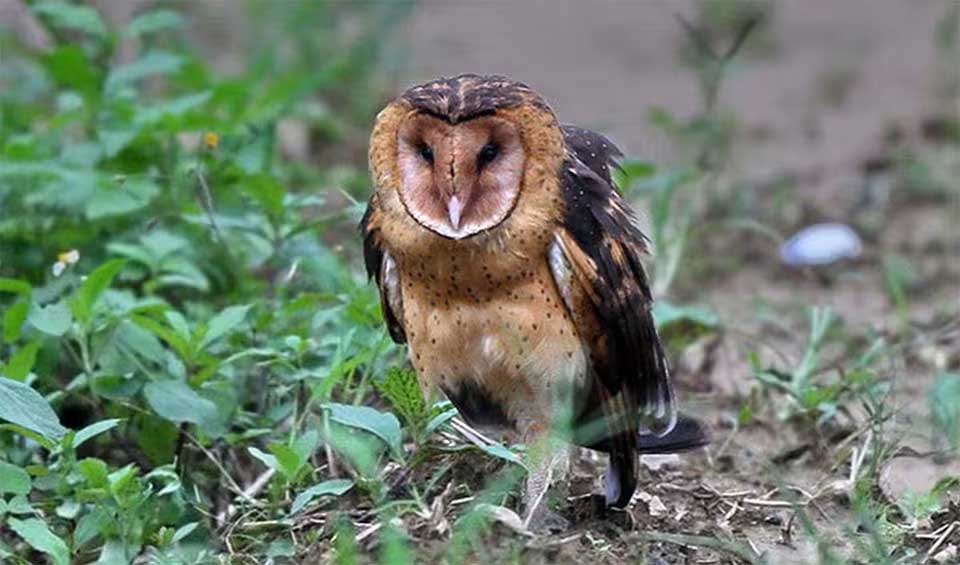Australian grass owl, also known as the Eastern grass owl, is a fascinating and elusive species of owl endemic to the grasslands and wetlands of Australia. This enigmatic bird exhibits unique behaviors and adaptations that allow it to thrive in its specialized habitat.
One of the most remarkable aspects of the Australian grass owl is its preference for roosting and nesting on the ground, a behavior uncommon among owls. This ground-dwelling lifestyle necessitates specialized nesting strategies to ensure the safety and survival of its offspring. The owl constructs its nest amidst tall grass, meticulously hidden from view. By carefully trampling a small patch of grass, the owl creates a concealed nesting site, effectively camouflaging it from potential predators and threats.
To further conceal its nest and young, the Australian grass owl creates multiple pathways leading to the nesting site, serving as covert access points that allow the owl to come and go discreetly. This ingenious nesting strategy demonstrates the owl’s remarkable ability to adapt to its environment and mitigate the risks associated with ground-level nesting.
The hunting behavior of the Australian grass owl is equally fascinating and well-adapted to its grassland habitat. Unlike other owls that hunt from elevated perches or in flight, the grass owl employs a unique hunting technique known as “quartering.” Flying low to the ground, the owl uses its long legs to reach down into the grass, probing for hidden prey such as rodents and small mammals. This specialized hunting strategy capitalizes on the owl’s keen hearing and acute sense of spatial awareness, allowing it to detect and capture prey that may be invisible from above.
The success of the Australian grass owl’s hunts relies heavily on its exceptional auditory abilities, honed through evolution to detect the faint rustlings and movements of prey hidden within the dense grasslands. Once prey is detected, the owl employs precise strikes with its talons, swiftly dispatching its quarry with remarkable accuracy.
Distribution
 Australia
Australia Bangladesh
Bangladesh Official estimate
Official estimate
 China
China Fiji
Fiji Official estimate
Official estimate
 Hong Kong
Hong Kong India
India Indonesia
Indonesia Japan
Japan Myanmar
Myanmar Nepal
Nepal New Caledonia
New Caledonia Papua New Guinea
Papua New Guinea Philippines
Philippines Taiwan
Taiwan Thailand
Thailand Vietnam
VietnamAnything we've missed?
Help us improve this page by suggesting edits. Glory never dies!
Suggest an editGet to know me
Terrestrial / Aquatic
Altricial / Precocial
Polygamous / Monogamous
Dimorphic (size) / Monomorphic
Active: Diurnal / Nocturnal
Social behavior: Solitary / Pack / Herd
Diet: Carnivore / Herbivore / Omnivore / Piscivorous / Insectivore
Migratory: Yes / No
Domesticated: Yes / No
Dangerous: Yes / No




